My skull hibernated
in the wet nest of my hair.
Which they robbed.
I was barbered
and stripped
by a turfcutter’s spade
who veiled me again
and packed coomb softly
between the stone jambs
at my head and my feet.
-Seamus Heaney
Abbeyleix bog in Co. Laois is a rare example of a bog that has not been utterly destroyed by industrial peat extraction. Many of the peatlands I saw from my window on the bus down here were not so lucky. The barren and lifeless landscape of bogs that have been stripped bare is a common sight in the Irish midlands, and it is becoming more common every day. Abbeyleix very nearly met the same fate back in 2000. If it were not for the dedication and quick thinking of the community, the thousands of species in the bog would be homeless and hundreds of thousands of tonnes more carbon would be in the atmosphere instead of in the ground where it belongs.
Bogs and Irish culture have been intimately linked for centuries, cropping up in everything from our traditional songs to the work of our most beloved poets. They have provided us with energy, clean water, jobs and a home for our wildlife. Globally, degraded peatlands account for a quarter of all carbon emissions from the land-use sector despite covering only 3% of the land. They also contain 30% of the world’s soil carbon; that’s twice as much carbon as is stored in all the world’s forests. It is estimated that more than 80% of Irish peatlands have been damaged in some way.
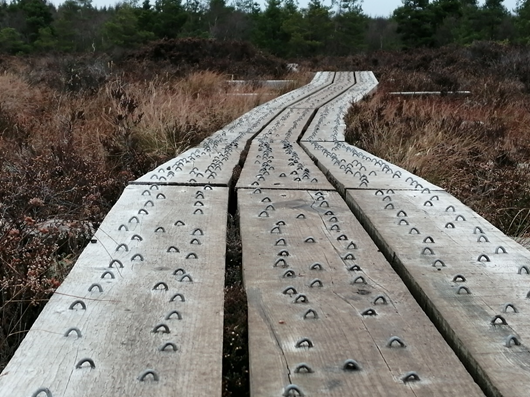
Peat forms because the water-logged and acidic conditions of a bog significantly slow the decomposition of bog mosses, also called sphagnum, causing a build-up of organic matter. Emissions from peatlands don’t just come from the burning of the peat; they also come from drainage. When the level of water in a bog (known as the water table) is reduced, this exposes more of the peat to the air. In this dry, oxygen-rich environment, the peat decomposes, releasing all that carbon back into the atmosphere.
Despite owning only 7% of Irish peatlands, the organisation primarily responsible for the industrial extraction of Irish peat is Bord na Móna, a semi-state company which was set up by the government in 1934 under the name ‘the Turf Development Board’. Since the inception of Bord na Móna proper in 1946, the company has been responsible for the development of 80,000 hectares of Irish bogs. Back in 2016, Bord na Móna rebranded themselves with the slogan ‘Naturally Driven’ and tried to position themselves as environmental stewards. The journalist John Gibbons called this campaign “profoundly, irredeemably dishonest” and “an exercise in cynicism”. He also quoted An Taisce as saying “We suggest they drop their new ‘Naturally Driven’ slogan and replace it with the phrase ‘Profit Driven’. Then Bord na Móna would at least be able to sell its business plan with a straight face”.

Abbeyleix bog had been owned by the De Vesci family since the early 1700s. In 1987, Tom De Vesci, who had previously attempted to have the bog designated as a heritage site, was coerced by Bord na Móna into selling the bog. “I was approached many times by Bord na Móna to sell it after my father died in 1983 and I always refused” Tom said in an interview. “But eventually I was informed that Bord na Móna would be taking ownership via a compulsory purchase order at a somewhat lower level of compensation than I would get if I sold it ‘voluntarily’ a few weeks earlier”. In 1989, Bord na Móna cut 66km of drains into the bog in preparation for future peat harvesting.
On Thursday, 20th of July 2000, Chris Uys, a member of the Heritage Company and now development officer for the Community Wetlands Forum, met with Jimmy Dooley of Bord na Móna to discuss plans for a walkway through the bog and to inform Jimmy of concerns regarding its development. The following day, locals noticed unfamiliar pieces of machinery on the bog, which had been delivered to the site by Bord na Móna overnight. Chris Uys raised the alarm in the community that development of the bog was about to begin. That Sunday, local resident Gary O’Keeffe parked a crane in the entrance to the bog under the guise that it had broken down during a bird-watching session in order to keep the rest of the machines out of the bog. By Monday morning, at least 50 people had gathered at the entrance to protest the development, with numbers swelling to around 100 by lunchtime.
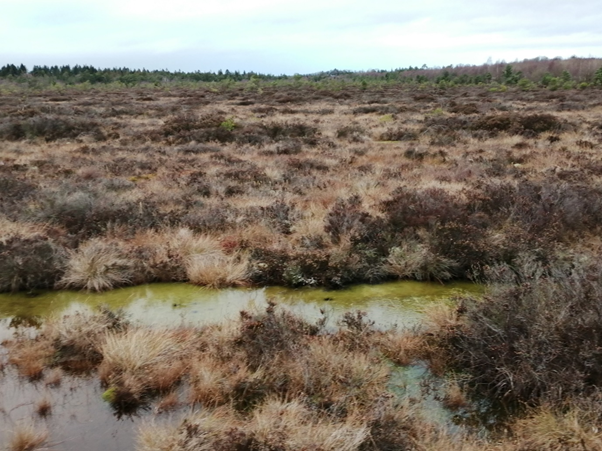
After much pressure from the community, Bord na Móna finally agreed to carry out an Environmental Impact Assessment (EIA) in April of 2001. They found that the Abbeyleix site was of “little or no conservation value”, an assessment which both the Abbeyleix community and the Irish Peatlands Conservation Council (IPCC) considered “incomplete and inaccurate”. An ecologist by the name of Doug McMillan was invited to carry out an independent assessment of the bog. Having only surveyed 20% of the land, Doug had already found over 500 species, and could reasonably conclude that the bog was home to thousands of species, including a butterfly which was protected by the EU. If Bord na Móna really had carried out an EIA, they had either done a poor job or they had lied about the results.
In 2002, An Bord Pleanála found that Abbeyleix bog was not exempted from the requirement for planning permission. This was the first time in Irish history that a peat development went through the planning permission process. Bord na Móna, in true form, took high court action against both the Laois County Council and An Bord Pleanála. In 2008, an ecologist by the name of Jim Ryan carried out another survey, finding that only 1% of the raised bog was still intact and forming peat. I am stunned when Chris tells me that, like in Abbeyleix, only 1% of active raised bog in the country remains. In other words, we have degraded 99% of carbon-rich raised bog nationwide through drainage and peat extraction. In April of 2009, more than 20 years after they were cut, work began to block the drains in Abbeyleix. In April of 2012, the Abbeyleix community signed a lease agreement which meant that the bog would be in their control for the next 50 years, provided that it was primarily used for habitat restoration. David had beaten Goliath.
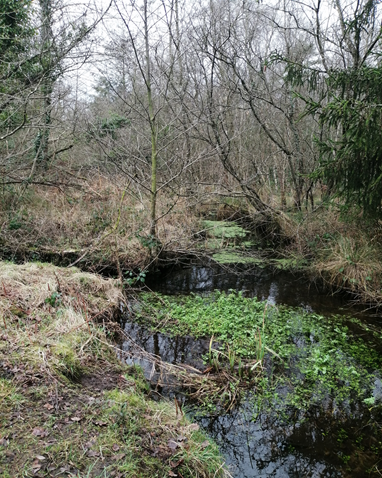
I met with Chris Uys in the lobby of the picturesque ‘Abbeyleix Manor Hotel’ on the outskirts of the bog. He has brought with him a textbook on peatlands and a folder packed to the brim with documents. When I ask him why peatlands are so important for biodiversity, he tells me that “the interesting thing about the biodiversity in peatlands is that the combination of plants and… the way they interact has a wider role to play than just purely the biodiversity that is there because it helps to retain water content, it has to do with carbon sequestration, and it supports other ecosystems”. He tells me that bogs are very important for breeding birds and that they link different ecosystems together like a natural corridor.
A walk through Abbeyleix bog feels like a walk through the history of this country. There is a calm here that soothes your aching bones like a hot bath. This is what is known rather robotically as a ‘cultural service’; one of many ‘ecosystem services’ provided by bogs like Abbeyleix. These somewhat stomach-churning terms are used by some environmentalists as an attempt to reframe the ecological crisis we have caused in the parlance of capitalism and thus convince business and industry to act. Gazing out over the endless beauty of this ancient landscape, I can’t help but think that it is downright insane to try and put a price on something that existed for so very long before our self-centred species ever dreamed up the concept of money.
Back in 1997, peat fires forced both Singapore and Kuala Lumpur to close their airports for several days. The peat in question was burning over 1,000km away in Indonesia. Scientists have estimated that the CO2 released during this one fire was equivalent to 13-40% of the mean annual global emissions from fossil fuels. The carbon is not the only issue; the vast quantities of smoke released by the fire had serious effects on health, with studies showing decreased lung function in children who were present during the event. According to a study in Archives of Environmental Health, 527 people died in 2 months as a result of the smoke, with 58,000 cases of bronchitis and 1 and a half million cases of acute respiratory infection reported. Fires like this have happened periodically over the last few decades, with one 2010 event in Russia leading to carbon monoxide levels in the capital that were 6 times the maximum acceptable level.
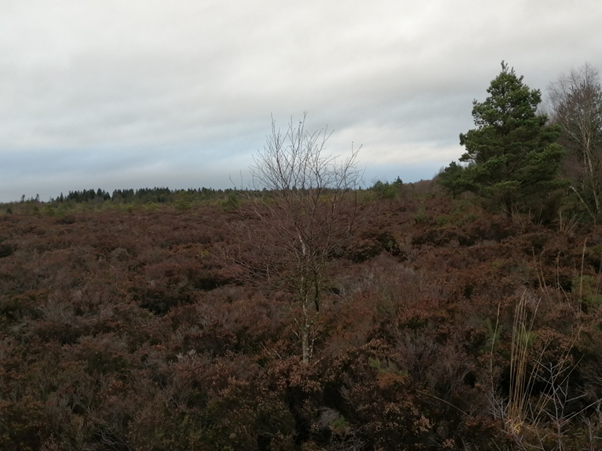
To the Irish, this all may seem like a distant threat, but were the Wicklow bogs to catch fire, the prevailing wind would carry all that lethal smoke right into the heart of Dublin. John Reilly, the head of the renewable energy branch of Bord na Mona, told me in an interview that “the biggest risk of wildfires is not posed by active peat production areas on drained peatlands, but rather the risk is high on virgin peatlands which are generally covered in vegetation such as gorse and heather”. He said that the major concern when it comes to fires was actually stockpiles of cut peat.
DCU-based peatlands expert John Connolly tells a slightly different story. “In one way he is right that the risk of fire (i.e. fire starting) on a drained industrial peatland may be less if all vegetation is removed. However, a lightning strike could start a fire and in that case drained peatlands are much more vulnerable than virgin (i.e. wet) peatlands”. Dr Connolly sent me a link to a 2016 study in ‘Nature’ which states that “the high burn severity of drained tropical/temperate peatland fires suggests that large-scale peatland drainage and mining in northern peatlands over the last century has also likely made managed northern peatlands more vulnerable to wildfire than natural (undrained) peatlands”. While there is an element of truth in what John Reilly told me, then, it seems that it was not the whole truth.
In 2006, an area of dried and cut peat the same size as Abbeyleix bog caught fire in the Irish midlands, leading to the evacuation of several Longford residents. While it was the stockpiles that caught fire rather than a bog itself, the incident shows how damaging peat fires can be. Smoke from the fire travelled 10 miles north. One Rooskey resident who had suffered from respiratory problems in the past was quoted in the Irish Times as saying “at the moment I am closing my windows and hope that will be enough”. A 2002 study of the Indonesian haze disaster, however, suggests that staying indoors only gets you so far in a situation like this.
They found that indoor concentrations of particulate matter were about half of what they were outside. That was a form of particulate matter known as PM10 because the individual particles are 10 micrometers or smaller in diameter. They could not find any difference, however, in the concentrations of fine particulate matter, or PM2.5, which are particles 2.5 micrometers or less. The researchers said that “perhaps the size of particulates was so small as to travel and intrude into any space; the concentration of pollutants was extremely high, and the indoor environments of buildings in Indonesia were rarely exempt from these pollutants”.
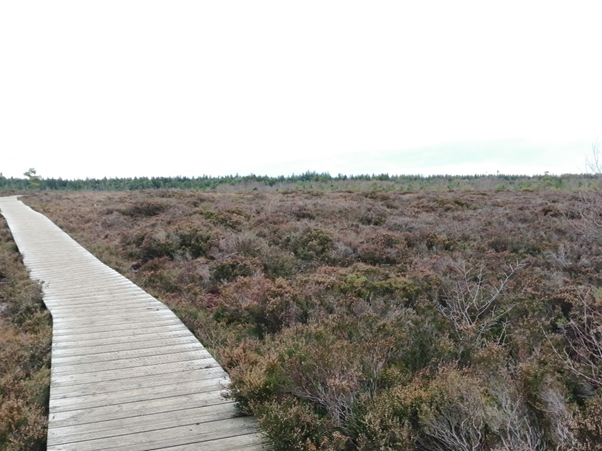
When asked about Mr Reilly’s claim that the presence of vegetation increases the risk of wildfires, Chris Uys replies that “from that point of view yes, that is so. But if you are talking degraded peatlands, degraded means that you have dried. For me, there is a higher risk… when the peat below the surface is dry and there is an ignition of anything above, it starts to smoulder underground as well”. Chris tells me that Abbeyleix has suffered from this very problem; “we had a fire at one stage, and you could just see smoke. On nearer investigation it was actually starting to simmer underground. It just keeps going”. While vegetation fires on the surface are manageable, the dried peat below can keep burning for a very long time and release a lot of carbon before it is extinguished.
Thankfully, Bord na Móna have been trying to get out of the peat business for over a decade, with over half of their revenue coming from non-peat-related activities in 2019. John Reilly, who has been doing excellent work building renewable energy infrastructure with the company, tells me that “Bord na Móna developed the first commercial wind farm in Ireland back in 1992, on a joint venture basis with the ESB, so we have some considerable experience in the sector”. They also announced last year that they were closing 17 of their active bogs, with the remaining 45 bogs to be closed within 7 years. However, some have said that this amounts to greenwashing, since the planned closures are of bogs that have been exhausted and are no longer profitable. As UCD peatlands expert Dr Florence Renou-Wilson put it in an interview with the Guardian, ““It’s a bit of a smokescreen. It’s all revenue-driven… they’re are all done and dusted”.

Bord na Móna is not the only company extracting Irish peat, though it is the largest. A company called Harte Peat has come under fire recently for carrying out large-scale peat extraction without a license in the Derrycrave bog in Westmeath. Photos released last year by ‘Friends of the Irish Environment’ showed that Harte had been cutting the peat right down to the mineral layer below, leaving almost no possibility of recovery. Peat that had formed at a rate of about 1 millimetre a year until it was several meters thick was stripped down to the bone in the geological blink of an eye, depriving animals of their homes and future humans of their right to security. This tragedy has played out countless times across the country over generations, leaving us with little more than a silhouette of the beautiful and important landscapes which once dominated the Irish midlands.
The degradation of Ireland’s peatlands doesn’t just threaten our health, it also threatens our wallets. New regulations require that we start reporting the emissions from our peatlands to the EU from 2021. Ireland is already facing hundreds of millions of euro in fines for failing to meet our emissions targets and this will bring us further off target. Chris tells me that “We were fined 150 million for this already… and we’re gonna be fined again until these people stop… Bord na Móna don’t get fined. It’s the government that gets fined. They merrily go on. They can go on for another 30 years if the government allow them. But we get that fine”.

When asked to what extent Ireland will be able to cope with these changes to EU law, Dr Connolly tells me that “the government and the EPA have made some investments in funding research and research infrastructure over the past few years. These investments will allow scientists to provide some of the detail that is required in the legislation, however much more investment is needed in research, infrastructure and rewetting/restoration as peatlands in Ireland are severely degraded and emissions are unknown in many areas”. But does this mean more fines for the Irish government? “It depends. If peatland emissions can be reduced to zero by the start of the 2026 reporting period, then no. However, current emissions are estimated to be about 11 million tonnes of CO2 … The reduction of these emissions to zero over the next six years will be very challenging.”
I ask Chris if Abbeyleix bog became a net source of emissions following the drainage and, if so, if it is back to being a net sink. “Possibly we are not a net sink yet… the higher the water level the less carbon emissions,” he tells me. “Then it gets to a point where it changes and it starts to give out methane emissions. There is a sweet spot where you have the least emissions. The other problem with degraded peatlands is that if you don’t have vegetation formation, (sphagnum), then it does not negate the methane”. The blocking of the drains has not been in vain, however. Whereas only 1% of the active raised bog remained in 2009, Chris reckons that as much as 10-15% has recovered in the intervening decade.

It takes time for peatlands to regenerate; all the more reason to block as many drains as we can as soon as we can. The light is beginning to fade from the grey clouds overhead as I slip and slide across the wet wooden walkways. The first few drops of rain begin to fall once more on the mounds and ditches of Abbeyleix. This beautiful landscape serves as both a cautionary tale and a beacon of hope. It showcases the terrible consequences of degrading our bogs, but is also a reminder that with elbow-grease, dedication and time we can undo some of the wrongs we have inflicted on the natural world.